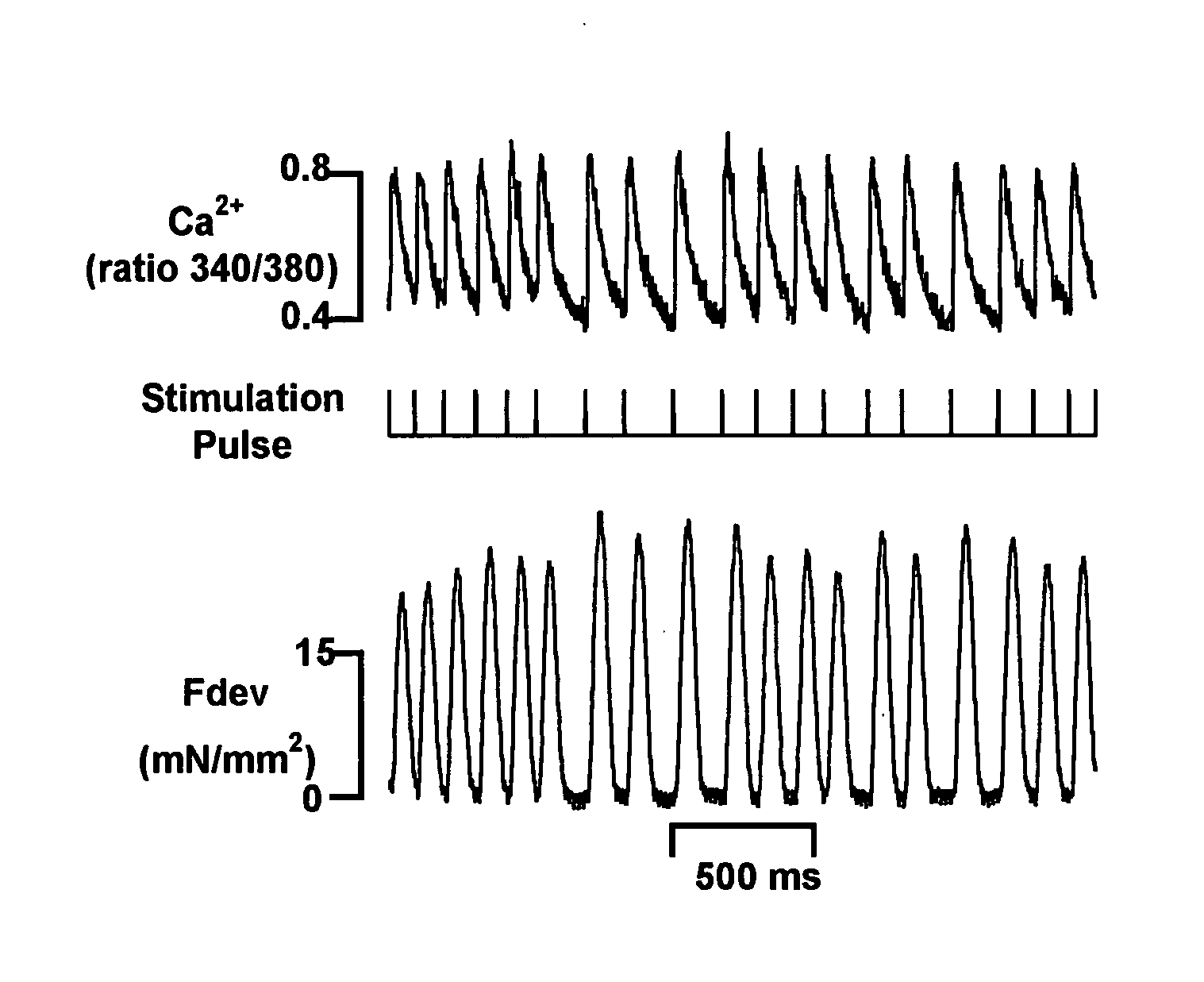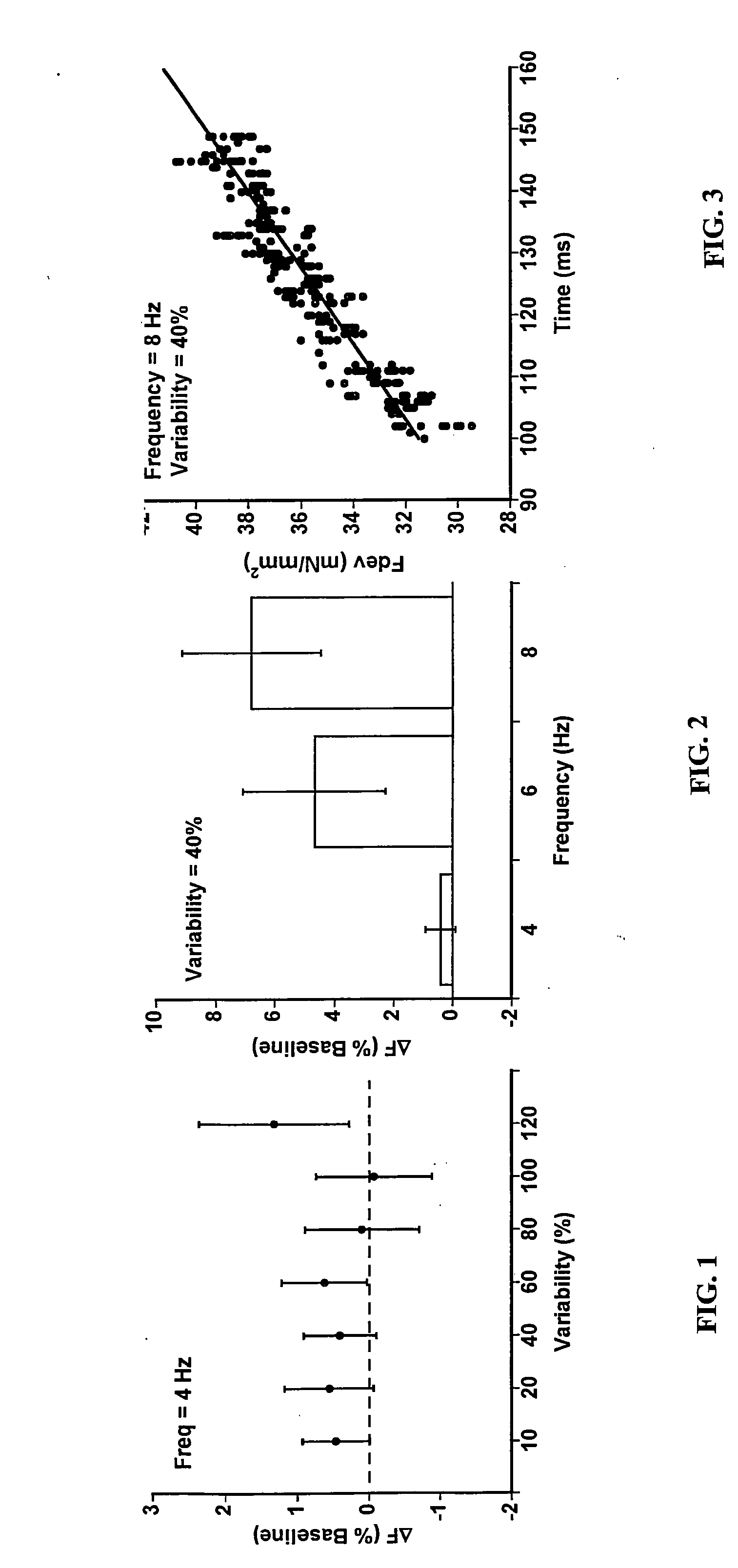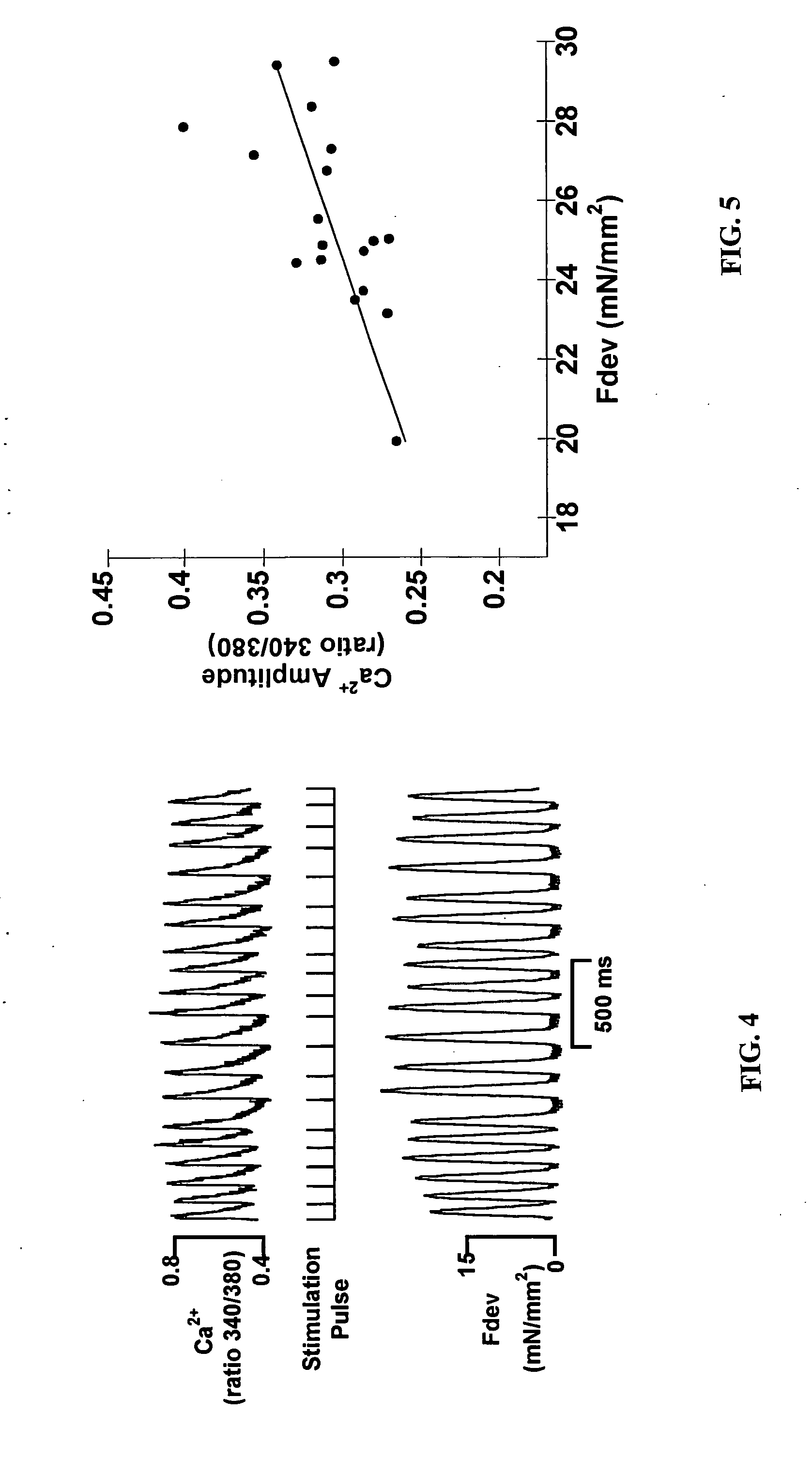Heart rate variance cardiac pacemaker
- Summary
- Abstract
- Description
- Claims
- Application Information
AI Technical Summary
Benefits of technology
Problems solved by technology
Method used
Image
Examples
Embodiment Construction
[0027] Small isolated cardiac trabeculae (˜150 μm diameter, length ˜2-3 mm), were carefully dissected from the right ventricle from rat hearts. At 37° Celsius, these trabeculae were stimulated isometrically at a fixed rate and at intervals with a variable component that ranged from about 10-120% variability baded on the average inter-beat duration of the heart. Variability was distributed linearly, and expressed as a percentage of the variation between the longest and shortest beat compared to steady state (e.g. at 40% variation at 4 Hz, inter-beat duration varied from 200 to 300 ms). The mean average developed for a 5 minute period during variable pacing was analyzed, and compared to the steady state response at the base frequency. The number of beats during the 5 minute period was identical between variable and steady pacing. No significant changes in mean average force were observed between fixed (28.1±5.8 mN / mm2) and 40% variable pacing (28.3±5.7 mN / mm2) at 4 Hz. Data from the e...
PUM
 Login to View More
Login to View More Abstract
Description
Claims
Application Information
 Login to View More
Login to View More - R&D
- Intellectual Property
- Life Sciences
- Materials
- Tech Scout
- Unparalleled Data Quality
- Higher Quality Content
- 60% Fewer Hallucinations
Browse by: Latest US Patents, China's latest patents, Technical Efficacy Thesaurus, Application Domain, Technology Topic, Popular Technical Reports.
© 2025 PatSnap. All rights reserved.Legal|Privacy policy|Modern Slavery Act Transparency Statement|Sitemap|About US| Contact US: help@patsnap.com



